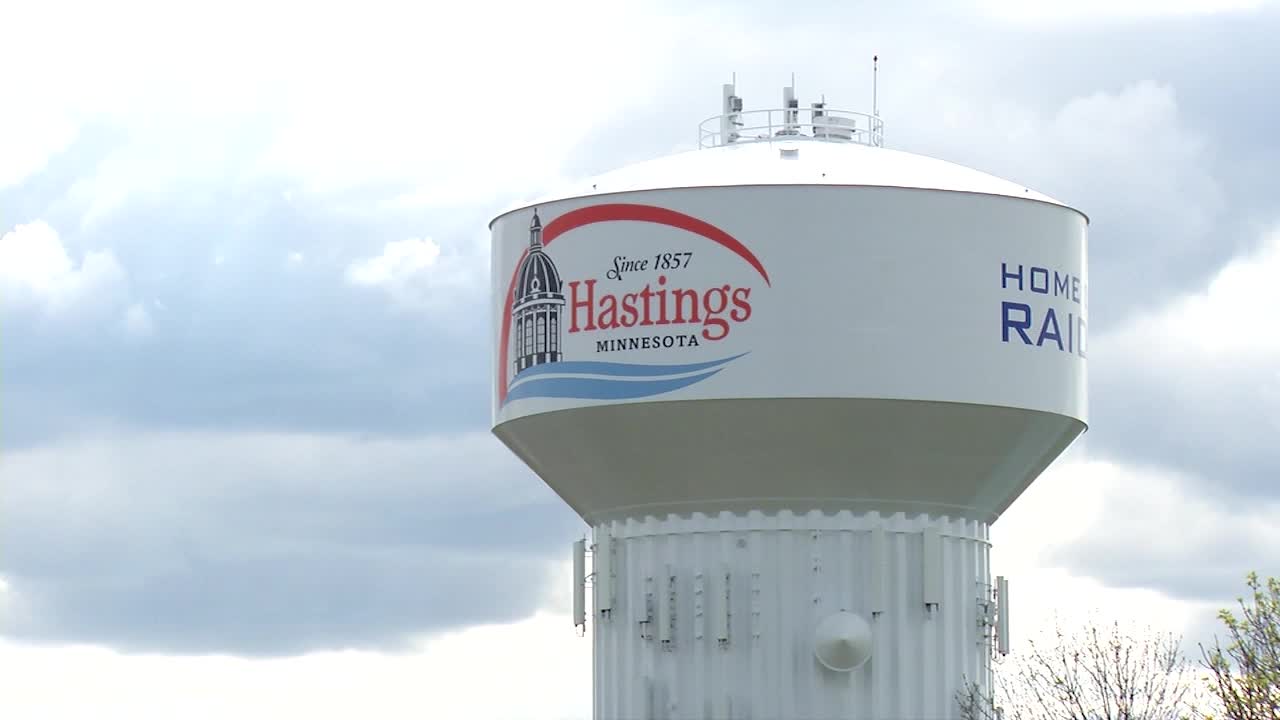Hastings residents question safety of drinking water, officials working towards a solution
Hastings residents question safety of drinking water, officials working towards a solution KSTP


Hastings Residents Question Safety of Drinking Water, Officials Working Towards a Solution

Hastings residents question safety of drinking water, officials working towards a solution
The Issue with PFAS Levels in Hastings’ Drinking Water
The Hastings community recently had the opportunity to address concerns about the presence of forever chemicals, known as PFAS, in the city’s drinking water during a meeting held on Thursday.
According to a report by 5 EYEWITNESS NEWS last month, five out of the city’s six wells were found to have PFAS levels above the newly established national limits for allowable drinking water. The city had previously stated that its PFAS levels were within the guidelines set by the Minnesota Department of Health (MDH) until the new Environmental Protection Agency (EPA) limit came into effect.
Efforts to Ensure Clean Drinking Water
Hastings Mayor Mary Fasbender acknowledged that the entire water system in the city is compromised and emphasized her goal of providing residents with clean drinking water. However, achieving this goal will require significant time and financial resources.
Representatives from the Minnesota Department of Health and the Minnesota Pollution Control Agency presented recent water testing results during the meeting.
Concerns Raised by Residents
The meeting, held at the packed Hastings High School auditorium, provided an opportunity for residents to voice their concerns about the safety of their drinking water.
Plans for Water Treatment Facilities
The city of Hastings is already making plans to construct three water treatment facilities, which are estimated to cost nearly $69 million. Without assistance from the federal or state government, water rates could increase.
Ryan Stempski, the Hastings Public Works director, stated that if the city has to bear the entire cost without assistance, water rates could double within two years, triple within four years, and continue to increase up to 250% over the next ten years.
3M’s Involvement in PFAS Contamination
A significant portion of Minnesota’s PFAS contamination has been linked to 3M facilities in the east metro area. In 2018, the state reached an $850 million settlement with 3M to address PFAS contamination in the water supply. As part of a finalized settlement this year, 3M will pay an additional $10 billion to water utilities across the country.
Hastings is collaborating with the Minnesota Pollution Control Agency and 3M to investigate the connection between groundwater contamination and the Mississippi River. This investigation could potentially allow the city to access state settlement funds.
Seeking Financial Assistance
The city of Hastings is actively applying for federal and state aid to help cover the costs of constructing the three water treatment facilities. This project is expected to take five years to complete.
SDGs, Targets, and Indicators Analysis
1. Which SDGs are addressed or connected to the issues highlighted in the article?
- SDG 6: Clean Water and Sanitation
- SDG 14: Life Below Water
The article discusses the issue of PFAS contamination in the city’s drinking water, which relates to the goals of ensuring clean water and protecting life below water.
2. What specific targets under those SDGs can be identified based on the article’s content?
- SDG 6.3: By 2030, improve water quality by reducing pollution, eliminating dumping and minimizing release of hazardous chemicals and materials.
- SDG 14.1: By 2025, prevent and significantly reduce marine pollution of all kinds, particularly from land-based activities, including marine debris and nutrient pollution.
The article highlights the need to address PFAS contamination in the city’s drinking water, which aligns with the targets of improving water quality and preventing pollution.
3. Are there any indicators mentioned or implied in the article that can be used to measure progress towards the identified targets?
- PFAS levels in the city’s drinking water: The article mentions that five of the city’s six wells were found to have PFAS levels above the newly established national limits. Monitoring and reducing these levels would be an indicator of progress towards SDG 6.3.
- Efforts to understand the connection between groundwater contamination and the Mississippi River: The article mentions that the Minnesota Pollution Control Agency and 3M are working together to understand this connection. This research and its findings would be an indicator of progress towards SDG 14.1.
These indicators provide measurable ways to track progress in addressing the PFAS contamination issue and achieving the targets under SDG 6 and SDG 14.
SDGs, Targets, and Indicators Table
| SDGs | Targets | Indicators |
|---|---|---|
| SDG 6: Clean Water and Sanitation | 6.3: By 2030, improve water quality by reducing pollution, eliminating dumping and minimizing release of hazardous chemicals and materials. | – PFAS levels in the city’s drinking water |
| SDG 14: Life Below Water | 14.1: By 2025, prevent and significantly reduce marine pollution of all kinds, particularly from land-based activities, including marine debris and nutrient pollution. | – Efforts to understand the connection between groundwater contamination and the Mississippi River |
Copyright: Dive into this article, curated with care by SDG Investors Inc. Our advanced AI technology searches through vast amounts of data to spotlight how we are all moving forward with the Sustainable Development Goals. While we own the rights to this content, we invite you to share it to help spread knowledge and spark action on the SDGs.
Fuente: kstp.com

Join us, as fellow seekers of change, on a transformative journey at https://sdgtalks.ai/welcome, where you can become a member and actively contribute to shaping a brighter future.







